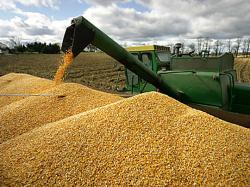Interference In Corn Markets Hurts Consumers In The Long Run
June 3, 2010 | 2 min to read

“Thirty years ago, the federal government extended a helping hand to the corn-based ethanol industry, providing yearly subsidies and blocking foreign ethanol from being imported into the country. … Unfortunately, this continuing assistance for a mature industry has had negative consequences in the meat and poultry sector,” says AMI President and CEO J. Patrick Boyle in a guest column appearing in Food & Drink Digital.
Boyle notes that Congress’ decision in 2007 to mandate that a substantial portion of the corn be converted into fuel instead of being used as feed pushed many in animal agriculture past the tipping point. The law effectively created a new domestic market for corn, ensuring that a substantial portion of the crop – more than one-third – be converted into corn-based ethanol and pumped in our gas tanks.
Boyle cites a report released in September 2008 by the Congressional Research Service (CRS) stated that the dramatic increase in livestock production costs over that period were attributed to feed. “Current corn market prices are still well above historic levels and the meat and poultry industry has continued to suffer,” Boyle states.
Boyle points to the turkey industry, which has endured the deepest cutbacks of any in animal agriculture– a 9 percent decrease since 2008 levels – to adjust to these increased input costs. More importantly, the turkey industry eliminated nearly 3,000 jobs vital to rural America in 2008 and 2009 alone.
He also notes that U.S. pork industry endured the two most challenging years in the industry’s history in 2008 and 2009. Total losses for the industry amounted to more than $6.2 billion and average farrow-to-finish operations lost nearly $23 for each animal marketed from October 2007 through January 2010. This financial disaster occurred despite near-record hog prices in 2008.
In addition, Boyle says from December 2007 to February 2010 the cattle feeding sector of the beef industry lost a record $7 billion in equity due to high feed costs and economic factors that have negatively affected beef demand. The cumulative additional cost on the broiler chicken industry since corn prices began their rise in the fall of 2006 has been almost $15 billion. This additional cost does not include the higher cost of other feed ingredients, such as soybean meal, where prices tend to move in tandem with corn.
“The reduction in herd sizes over the past two years due to high feed costs will lead to tighter protein supplies and ultimately higher prices for consumers at the meat and poultry case. Federal subsidies for corn-based ethanol will cost taxpayers nearly $7 billion annually by 2015. As an alternative, it is much better economic and energy policy to let the market decide the price of corn, not the federal government. The corn-based ethanol industry has had a helping hand for three decades, it’s time it competes on its own,” Boyle concludes.
To view the column in its entirety, click here: http://www.meatami.com/ht/a/GetDocumentAction/i/59927
Source: American Meat Institute
